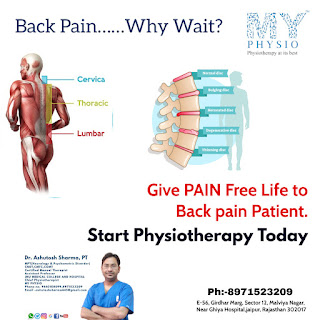Physical Therapy Approaches in the Treatment of Low Back Pain
https://www.ncbi.nlm.nih.gov/pmc/articles/PMC6251828/
Globally, in 2016, low back pain (LBP) contributed 57.6 million of total
years lived with disability. Low Back Pain Guidelines regularly
recommend the use of physical exercise for non-specific LBP. Early
non-pharmacological treatment is endorsed.
This includes education and self-management, and the recommencement of normal activities and exercise, with the addition of psychological programs in those whose symptoms persist.
The aim of physiotherapy treatments is to improve function and prevent disability from getting worse. There is no evidence available to show that one type of exercise is superior to another, and participation can be in a group or in an individual exercise program. Active strategies such as exercise are related to decreased disability. Passive methods (rest, medications) are associated with worsening disability, and are not recommended.
The Danish, United States of America, and the United Kingdom Guidelines recommend the use of exercise on its own, or in combination with other non-pharmacological therapies. These include electrotherapy, yoga, massage, and spinal manipulation. In chronic low back pain, the physical therapy exercise approach remains a first-line treatment, and should routinely be used.
source:https://www.ncbi.nlm.nih.gov/pmc/articles/PMC6251828/
Management of chronic low back pain (without serious pathology)
| Chronic low back pain (without serious pathology) |
|---|
| Triage using a clinical assessment (history-taking, physical examination, and neurological tests (to recognize radicular features) |
| Patients should be screened for ‘red flags’ to exclude serious pathologies, and diagnostic tests (such as imaging) only carried out if suspected |
| Patients should be screened for psychosocial risk factors (‘yellow flags’ such as low self-efficacy, catastrophizing, fear of movement) to predict poorer outcomes |
| Use a risk stratification tool (such as STarT) |
| Non-pharmacological and non-invasive management treatment is recommended that includes education and self-management, and the recommencement of normal activities and exercise, with the addition of psychological programs in those whose symptoms persist (multidisciplinary treatments) |
| Primary conservative physical treatment exercises include walking, Pilates, tai chi, yoga, progressive relaxation (and massage, and manual therapy in some guidelines) |
| No evidence available to show that one type of exercise is superior to another Choice may ultimately depend on patients’ preferences and on the experience of the treating therapist A diversity of types of exercises should be used |
| Physical therapy exercise approach remains a first-line treatment, and should routinely be used Referral could be for an individual or group exercise program Passive physical therapies (massage, spinal mobilization, acupuncture, and spinal manipulation with radiculopathy) are not usually endorsed, or are optional in some guidelines |
Management of acute low back pain (without serious pathology)
| Acute low back pain (without serious pathology) | |
|---|---|
| Initial reassurance, guidance to stay active and avoid bed rest, and provide guidance on self-management | |
| Self-management can include self-exercises and education from reading booklets or being involved in online education for low back pain | |
| Primary conservative physical treatment may include exercises, superficial heat, and manual therapy | |
| Guidance to return to normal activities, or referral for an individual or group exercise program | |
| Pharmacological therapies include nonsteroidal anti-inflammatory drugs (NSAIDs) and weak opioids for brief periods (paracetamol is not recommended) | |
| Progress should be reviewed in 7–14 days |


Comments
Post a Comment